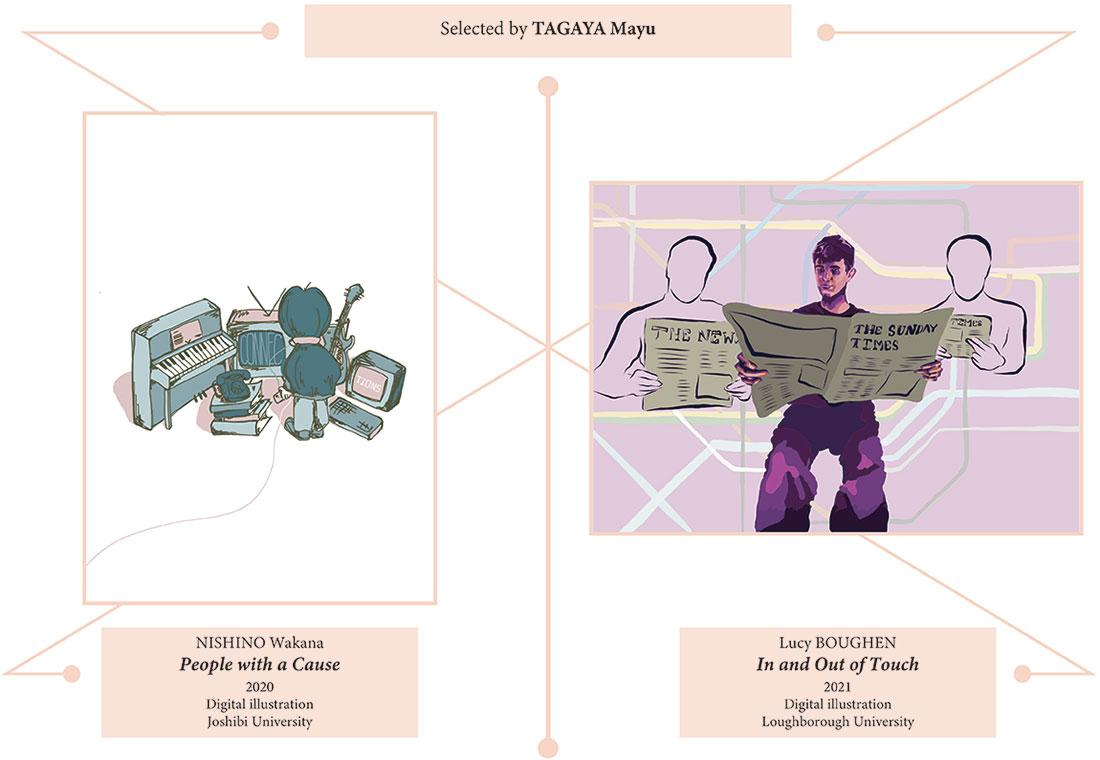Panel one - Selected by Mayu TAGAYA

Curator Comment by Mayu TAGAYA about “People with a Cause” by Wakana NISHINO
A person stands with their back to the viewer, in a scene in which various items such as a piano, guitar, TV, personal computer, book, and telephone are placed.
This work contains a message that the artist herself and others who are tired of social net-working sites and feel lonely, are not alone.
In today's world where SNS has become commonplace, you can easily connect with anyone at any time. The connection can sometimes be annoying, but when we turn off SNS, we may feel lonely and full of anxiety. It seems that the artist depicted this kind of modern feeling of loneliness.
However, even if you're away from social media, there are many ways to connect with people. You can connect with people by using letters, using books, words using telephones, music using musical instruments, and sounds and images on TVs and personal computers. Even if it's not on SNS, there is someone out there beyond the familiar.
In the end, it makes me feel positive that I am connected to someone, not alone, no matter what I do.
Curator Comment by Mayu TAGAYA about “In and Out of Touch” by Lucy BOUGHEN
In the center is a man reading a newspaper while seated. On both sides are silhouettes of people who read newspapers in the same way. And in the background, something like a train route map is drawn.
This work seems to express the connection with society, the world, and other regions.
By reading the newspaper, you can learn about the problems and movements of the world. Also, riding on the train allows you to experience how places are connected.
While people are connected to the world, society, and the environment in these daily activities, it is surprisingly difficult to create connections between people. For example, when you ride on a train, do you have any communication with the person sitting opposite or next to you, such as eye contact or touch? I think it's rare. We have various connections, and although various connections are born from our actions, when we take the train we spend our days without any connection with the passengers of the same train.
When I was looking for what kind of connection there was in our daily lives, I was able to realize from this work that there are actually scenes where we spend our time in isolation without any connection.
It is also the connection with this work that gives you such an opportunity to notice.